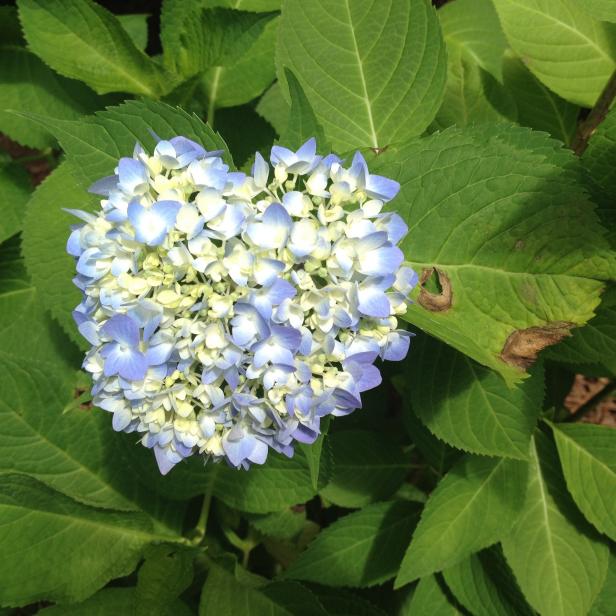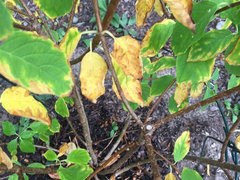The Single Strategy To Use For Hydrangea Leaves Turning Yellow
Wiki Article
The Buzz on Hydrangea Leaves Turning Yellow
Table of ContentsWhat Does Hydrangea Leaves Turning Yellow Mean?Some Ideas on Hydrangea Leaves Turning Yellow You Should KnowHydrangea Leaves Turning Yellow Things To Know Before You BuyThe 7-Second Trick For Hydrangea Leaves Turning YellowLittle Known Questions About Hydrangea Leaves Turning Yellow.Hydrangea Leaves Turning Yellow Can Be Fun For Anyone
One opportunity is that the plant is not getting enough sunlight. Throughout the cold weather, the days are shorter, and the sun is not as extreme, so see to it to place your Hydrangea in a spot where it will certainly access the very least 6 hours of sunshine every day. One more factor for Hydrangea yellow leaves in winter season could be excessive water.Lastly, the leaves may be turning yellow as a result of temperature level stress and anxiety. Hydrangeas like cooler temperature levels, so if the plant remains in an area that gets also warm or also chilly, the leaves will transform yellow. If you assume temperature stress may be the problem, try relocating your Hydrangea to a various area or protecting it from the aspects with a burlap wrap.
New development will be observed in very early spring, when you'll discover green foliage growing from stems that might have shown up dead. If your leaves are transforming brown in spring or summer, there are most likely other factors at play (Hydrangea Leaves Turning Yellow). The specific factors depend upon the variety and their expanding conditions, but generally, brown hydrangea leaves are an indicator of dehydration and wilting in the heat
Not known Facts About Hydrangea Leaves Turning Yellow

Wilting is triggered by absence of moisture, indicating there are a couple of great methods to use to avoid this from happening. Provide your hydrangeas a healthy and balanced glug of water every few days when the temperatures are climbing up high, and treat the soil to far better retain wetness. After sprinkling, a dab of mulch around the base of each plant must aid with this by keeping wetness in the dirt.
This disrupts fungi spores from resolving. "The Botrytis fungus prospers in awesome and wet conditions, so prevent showering the entire plant when sprinkling and simply water at the roots," shares Roy Nicol, a Master Gardener. If you have actually missed out on the possibility for prevention and are managing an infection you need to remove all dead or significantly contaminated fallen leaves from the plant and destroy them to stop additional spread.
Not known Incorrect Statements About Hydrangea Leaves Turning Yellow
As a general general rule, we advise eliminating leaves when they are 50% brown or greater. While browning triggered by any reason can't be turned around, taking the corrective action described above will certainly motivate the plant to expand brand-new leaves so the harmed fallen leaves click for info either drop off normally or can be eliminated by the garden enthusiast.Hydrangeas should be sprinkled only when the top couple of inches of soil are completely dry, and should be given a thorough saturating each time. Underwatered hydrangeas are likely to have yellow, wilting, and drooping leaves.
The way you take care of hydrangea leaves transforming yellow relies on the vital issue creating the yellow leaves. This can be hard to determine, yet when you do you will have the ability to adjust your plant care as necessary to deal with the problem. As pointed out in the past, a common issue with hydrangeas is nutrition shortages.
Hydrangea Leaves Turning Yellow Can Be Fun For Anyone
During the height growing season, you ought to water at a rate of regarding 1 inch each week. If you are fretted about not properly watering your hydrangeas, there are a number of things you can do. Adding mulch to the base of the plants over the root zone aid to manage the temperature around the shrub and retain water in the soil.You can purchase and install simple watering worlds. Sprinkling worlds hold water in them and gradually release this water into the dirt as the ground ends up being dry. Merely load the world with water, stick the spout right into the soil within the root area near the base of the plant, and leave it in position till all the water is gone.
If it is too severe, some plants will never recover from transplant shock and will next remain to decrease up until they pass away. Lessen transplant shock by including as lots of roots as possible when excavating up your plant to relocate. Make sure to provide even more water than normal in the weeks adhering to growing to assist your plant recuperate and grow new roots.
Some Known Details About Hydrangea Leaves Turning Yellow
To stay clear of spreading fungal conditions, make sure to thouroughly clean and decontaminate any trimming tools before and after use. Finally, you can attempt to flush the origins with water to try this website eliminate excess fertlizer.Your hydrangea plant favors well-drained, moist soil. If the pot has inadequate drain, or your dirt is flooded, the leaves will certainly start to transform yellow.
If you don't water your hydrangea plant for more than a week, the fallen leaves will certainly start turning yellow. Fungal conditions that strike the plants tend to show indicators on the roots and the leaves of the plant.
Indicators on Hydrangea Leaves Turning Yellow You Need To Know

Report this wiki page